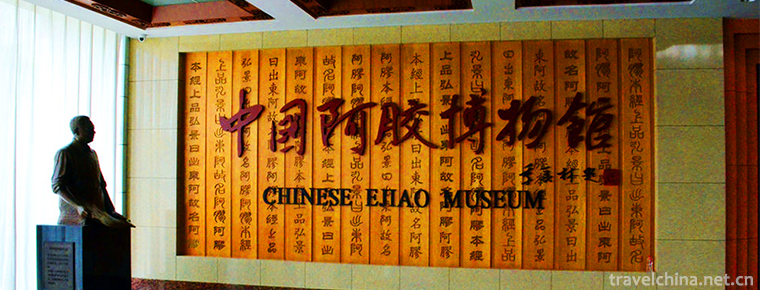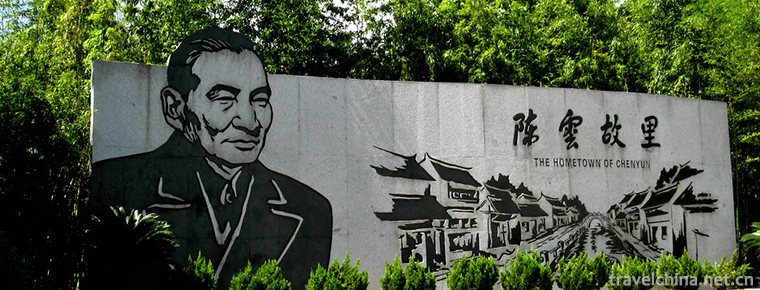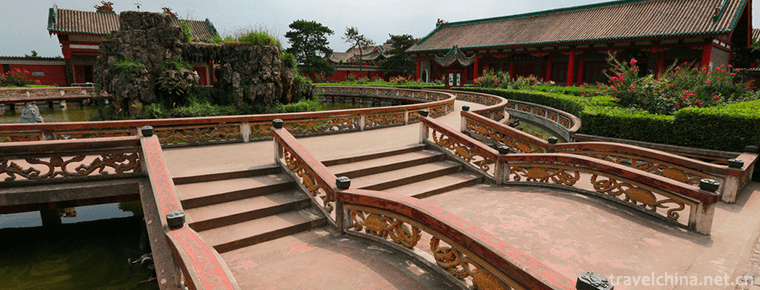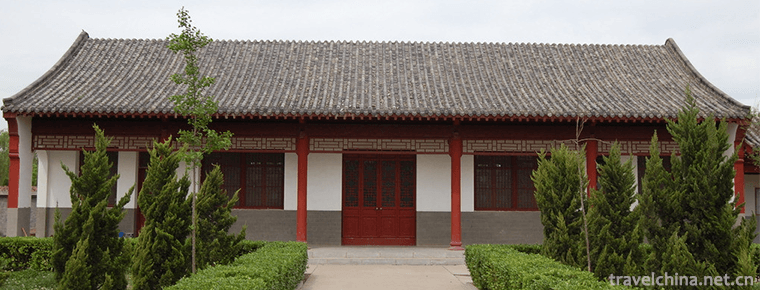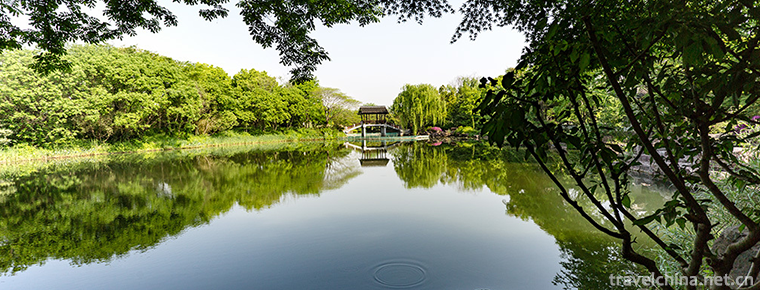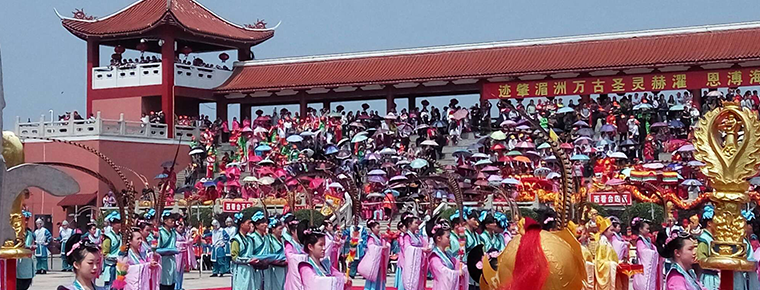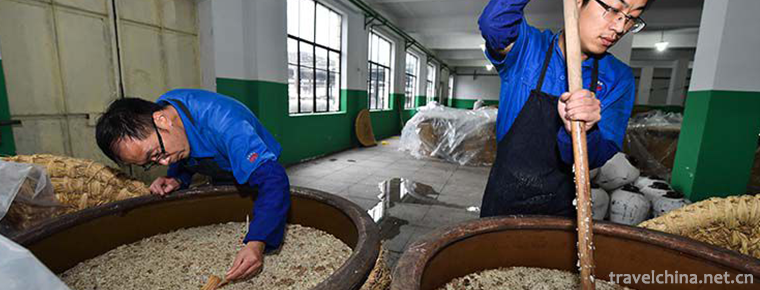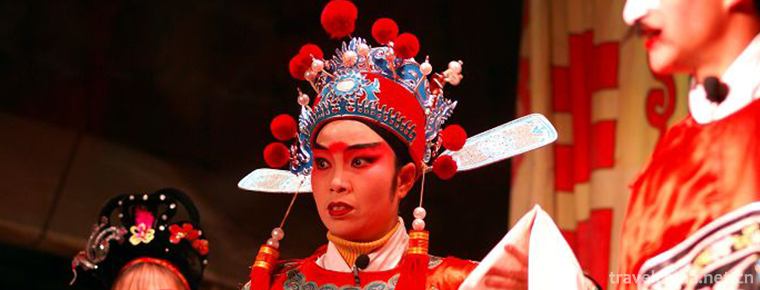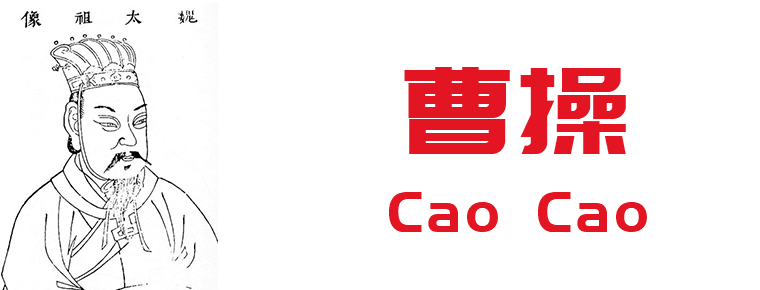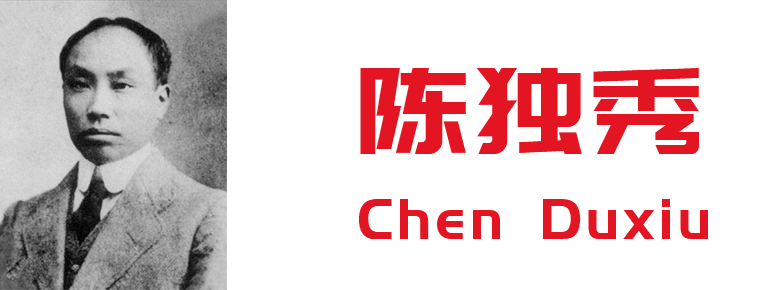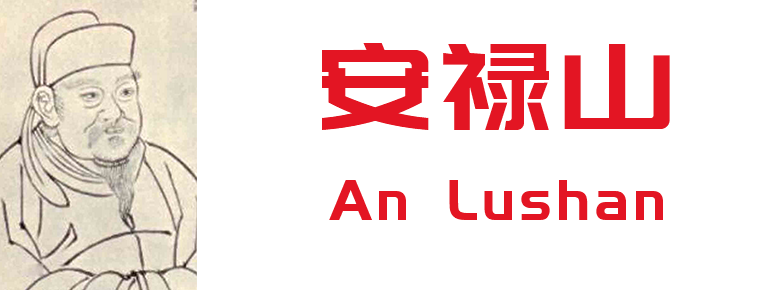Lingshan Temple
Lingshan Temple
Lingshan temple is located in Mianning County, Liangshan Prefecture, Sichuan Province. It is 8 km away from Mianning County. It is the most famous temple in Liangshan Prefecture. It belongs to Mianning County as well as Xichang Satellite Launch Center.
Temple introduction
Lingshan temple is an integral part of the Yihai Lingshan scenic spot in Liangshan Prefecture. Located 20 kilometers away from the county seat, it is located in the Western foot of Xiaoxiangling in the east of the county. Because the towering mountain behind it is called Lingshan, it is called Lingshan temple.
With Lingshan temple as the center, Mianning Lingshan mountain has a planned protection area of 40 square kilometers. Lingshan temple, built in the Qing Dynasty, is the largest religious temple in Mianning County. The main building, the grand hall, is spacious and solemn. The front hall is dedicated to Sakyamuni in the middle, with eighteen Arhats on both sides. The back hall is dedicated to the woodcut idols of monk Wuzhen, founder of Lingshan temple. Facing the Buddha is a sitting statue of Weituo Dharma protector.
Main attractions
Changhai monk pagoda
Lingshan temple is located in the hillside forest land dozens of meters behind the main hall of Lingshan temple. The pagoda is inlaid with bluestone slabs, more than 2 meters high. It was built in 1856 in Bingchen year of Xianfeng in Qing Dynasty. For the thirty second generation of Cao Dongzong, Haida and Shangta.
Monk Gao's practice place
In the west of the Daxiong Hall of Lingshan temple, passing through Qinglong River Valley, on the hillside with mixed trees, there are temple ruins. Behind the ruins are about 10 square meters of rock houses and large stone plate wells. It is said that this is the temple built by monk Gao who came to Lingshan to practice with ancestor Yang. Here you can overlook the Lingshan temple complex.
Tibetan stone carving in huotanbao
Located in the northwest end of Suzhou dam, fire charcoal fort, bafu village, Ningyuan township. A 1-meter-high, more than meter long prism stone, the right side engraved with Tibetan Buddhism Gelug doctrine, the title of "six character truth words", left engraved with a statue of offering treasure to pray for blessing. It is estimated to have been printed in the late Ming and early Qing Dynasties.
Stone tablet of Benbo religion
Located in Dayakou village, Chengxiang town. The stele is made of granite, about 1 m high, 0.4 m wide and 0.15 m thick. It is slightly weathered, and the characters and images are clear and distinguishable. The upper part of the stone tablet can be covered with cloud patterns, and the lower part is a relief of a lion. In the middle of the stele, there are three lines of Tibetan language (transcribed in Sanskrit), and the writing is simple and neat. The first one is the "eight character mantra" of Benbo sect in Tibet.
Mo Yuhai
The Black Sea. It is located at the source of Zhenggou of Lingshan river. It is about 3500 meters above sea level and looks like a gourd. The mountains in the north and south of the sea are covered with snow all the year round. There are sparse spruces and clusters of rhododendrons on the cliffs. The east slope extends slowly, and the silver plate glaciers of Gushan ridge extend into the forest. At the water outlet in the west, there are short clusters of Rhododendrons on the lawn, and there are jagged rocks interspersed among them. The sea water is black at a distance, and clear at the bottom at a close view, clean and dust-free.
Jinhai
Also known as the Red Sea. The sea area is red igneous rock, and the far-reaching sea water is red, which is the name. Located in the east of Lingshan main peak, the source of Zhijian ditch in Henan of Lingshan. The elevation is about 4000 meters, which is like a waist, and is made up of two sea heads connected up and down, each covering an area of more than 100 mu. The snow peak around the lake stands like a city dish, and the light clouds float over, and the sky and water are all in color.
Liansanhai
It is located in the west side of the watershed in the middle of the western mountain where Lingshan temple is located. They are three glacial lakes composed of three well preserved glacial cirque landforms in the fourth century. Each Haizi is surrounded by independent peaks. The three lakes in liansanhaizi have different shapes. The water is clear, the sky is bright and the clouds are shadow. In one of the lakes, there is a glacier leading to the center of the lake, which divides the lake into two. The scene is quite similar to the Taiji map, which is especially spectacular
Folklore
It is said that the world's Veda is standing posture, only the mount of the Buddha is sitting, because Lingshan Temple originally clean, not rauweituo covetously stood guard. In front of the temple, the newly built glazed tile gate is centered on the main hall patio. There are many halls and corridors on both sides. The front and rear are connected vertically and horizontally, and they are integrated into one another, forming an ancient building group. There are 6 ancient pine trees with strong strength outside the gate. There are three or four people in their arms. The age of the tree is at least 200 years. It is the main symbol of Lingshan temple.
Behind the Lingshan temple is a beautiful natural park. There are big old trees growing there. There is also a famous place in the area, but it is not known to outsiders - liansanhai. On a mountain, there are three lakes flowing quietly.
It is said that there are Ganoderma lucidum on the mountain, and there are thin springs and caves left by predecessors. There are also "fish" who are said to be able to climb trees in the lake. The lake and sea are relatively deep. The local government has not investigated the lake, but only learned from some local elderly people.
Related allusions
The history of Lingshan temple has been recorded in local records and steles. Ancestor Yang, commonly known as Yang Xuexin, was born in Longyang County, Changde Prefecture, Hunan Province. In the 47th year of Qianlong's reign of the Qing Dynasty, I came to Mianning. I heard that Dengtai mountain was the place where the ancient Buddha of burning lanterns practiced. "So he took a stick to see it until it reached the top of the mountain. It was sure that the site of the mountain was still there.".
At that time, there were about 100 Mianning disciples under the gate. Lingshan temple was built in the 59th year of Qianlong. County Magistrate Xinda became the temple title "Xiling", and the folk called "Lingshan Temple". In the 22nd year of Mianning, master Yang practiced in Lingshan temple for 9 years. He died in February of the ninth year of Jiaqing in Qing Dynasty.
After seven days, his disciple opened the niche and saw that his face was full of red light, as if he were living. He was about to move his body to the Buddhist temple and offer it for a long time. His body was completely dry and no longer decayed. One kilometer to the right of Lingshan temple, there is a natural megalithic seat in the shape of eight trigrams with a flat top. It is said that it is the Zen Stone of ancestor Yang's "sitting in peace".

-
China Ejiao Museum
China Ejiao Museum, built in 2002, is located at the foot of Mount Tai, east of Donga County on the Bank of the Yellow River. It is funded by Donga Jiao Group, the largest Ejiao production enterprise .
Views: 136 Time 2018-12-22 -
Chen Yuns former residence and Qingpu Revolutionary History Memorial Hall
Chen Yun's former residence and the Qingpu Revolutionary History Memorial Hall are the only Memorial Hall in the country that systematically demonstrates Chen Yun's life achievements approved by the C.
Views: 126 Time 2019-01-05 -
Maoling Museum
Maoling Museum is located on the Wuling Platform between Xianyang and Xingping in Shaanxi Province, about 40 kilometers away from Xi'an. It is a Museum of Dynastic History of the Western Han Dynasty.
Views: 165 Time 2019-02-07 -
Yicheng Temple Scenic Spot of Sun Bin Tourist City
Sun Bin Tourist City is located in Jishan Town, 20 kilometers northeast of Juancheng County, Heze City, Shandong Province. Juancheng is the hometown of Sun Bin, a famous.
Views: 80 Time 2019-02-13 -
Xixi Wetland Tourist Area
Xixi National Wetland Park is located in the west of Hangzhou City, Zhejiang Province. It is only 6 kilometers away from Wulin Gate, the main city of Hangzhou, and 5 kilometers away from West Lake..
Views: 126 Time 2019-02-25 -
The Mausoleum of the Yellow Emperor
The Mausoleum of the Yellow Emperor is one of the national intangible cultural heritages, which has formed a certain scale format and sacrificial ceremonies in the long-term practice..
Views: 150 Time 2019-05-04 -
Brewing Techniques of Shaoxing Yellow Rice Wine
Shaoxing has a long history of brewing wine, which can be traced back to the Spring and Autumn Period and the Warring States Period. By the time of the Northern and Southern Dynasties, it was well-kno.
Views: 162 Time 2019-06-14 -
Ming opera style
On May 20, 2006, Yiyang Opera was approved by the State Council of the People's Republic of China to be listed in the first batch of national intangible cultural heritage, numbered IV-5..
Views: 164 Time 2019-07-13 -
Cao Cao
Wei Wu Di Cao Cao (155 years - 220 March 15th), the name is Geely, the word Meng De, nicknamed hide. Prefectural governor of Yuzhou Qiao (today) Anhui Bozhou Person . Eastern Han Dynasty Outstanding i.
Views: 379 Time 2019-09-07 -
Chen Duxiu May Fourth leader
Chen Duxiu (October 9, 1879 -1942 May 27th), formerly known as "Qing Tong", the official name is "Sheng Sheng", "Zhong Fu", "Shi Shi". Anhui Huaining (now Anqin.
Views: 131 Time 2019-09-07 -
An Lushan
An Lushan (703 to 757 years). Yingzhou (today's Liaoning Chaoyang) Kang Name Rolling hill 。 His father may be kang Hu people Mother A Stead S is a the turks Witch. According to legend, his mother did .
Views: 248 Time 2019-09-11 -
Luzhou cuisine
Sichuan hotpot, famous for its hemp, spicy, fresh and fragrant, is the representative of Sichuan cuisine. It is said that the birthplace of Sichuan hotpot is xiaomitan in Luzhou (near Gaoba, Luohan street, Longmatan District)..
Views: 70 Time 2020-12-14
